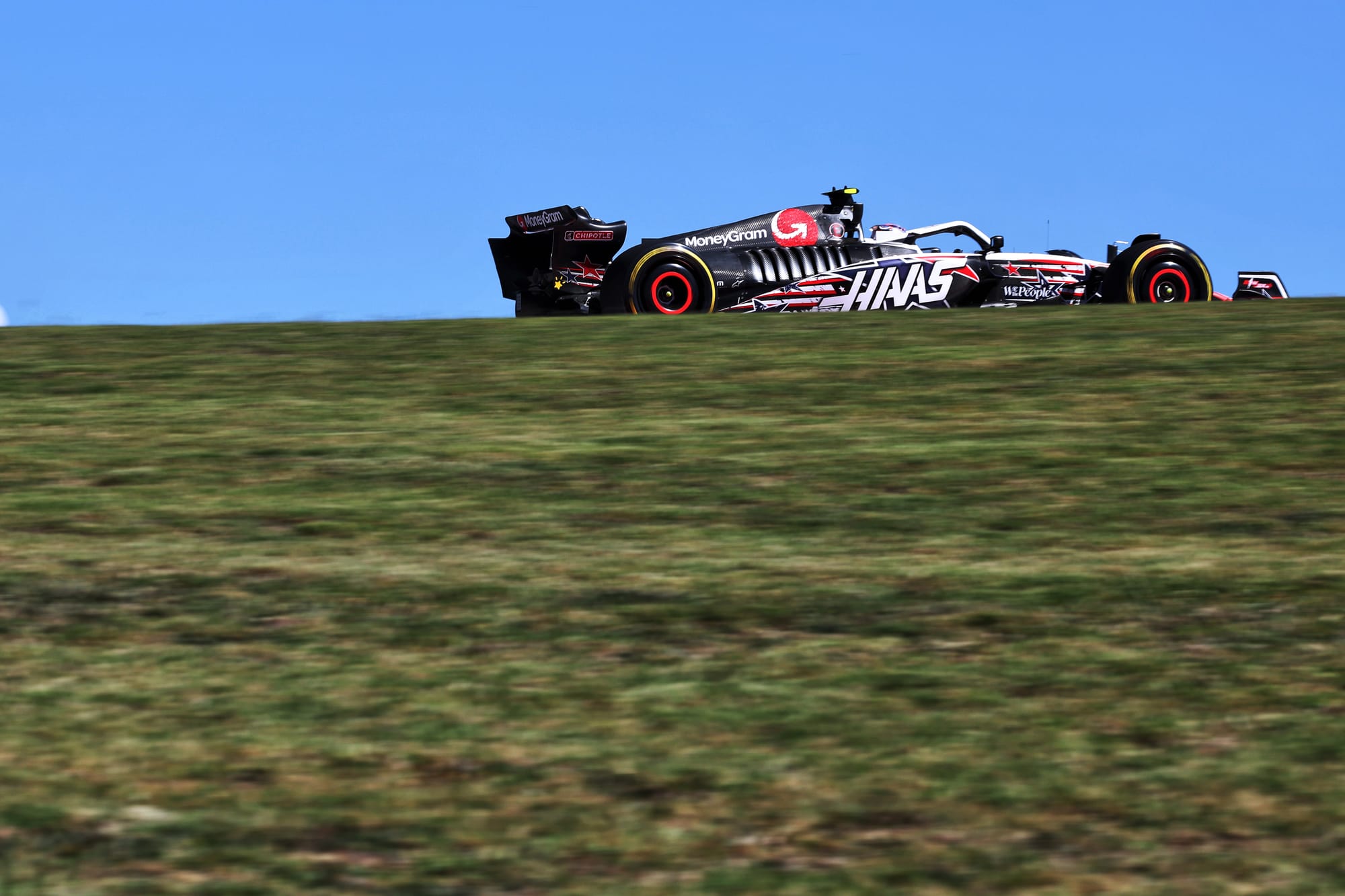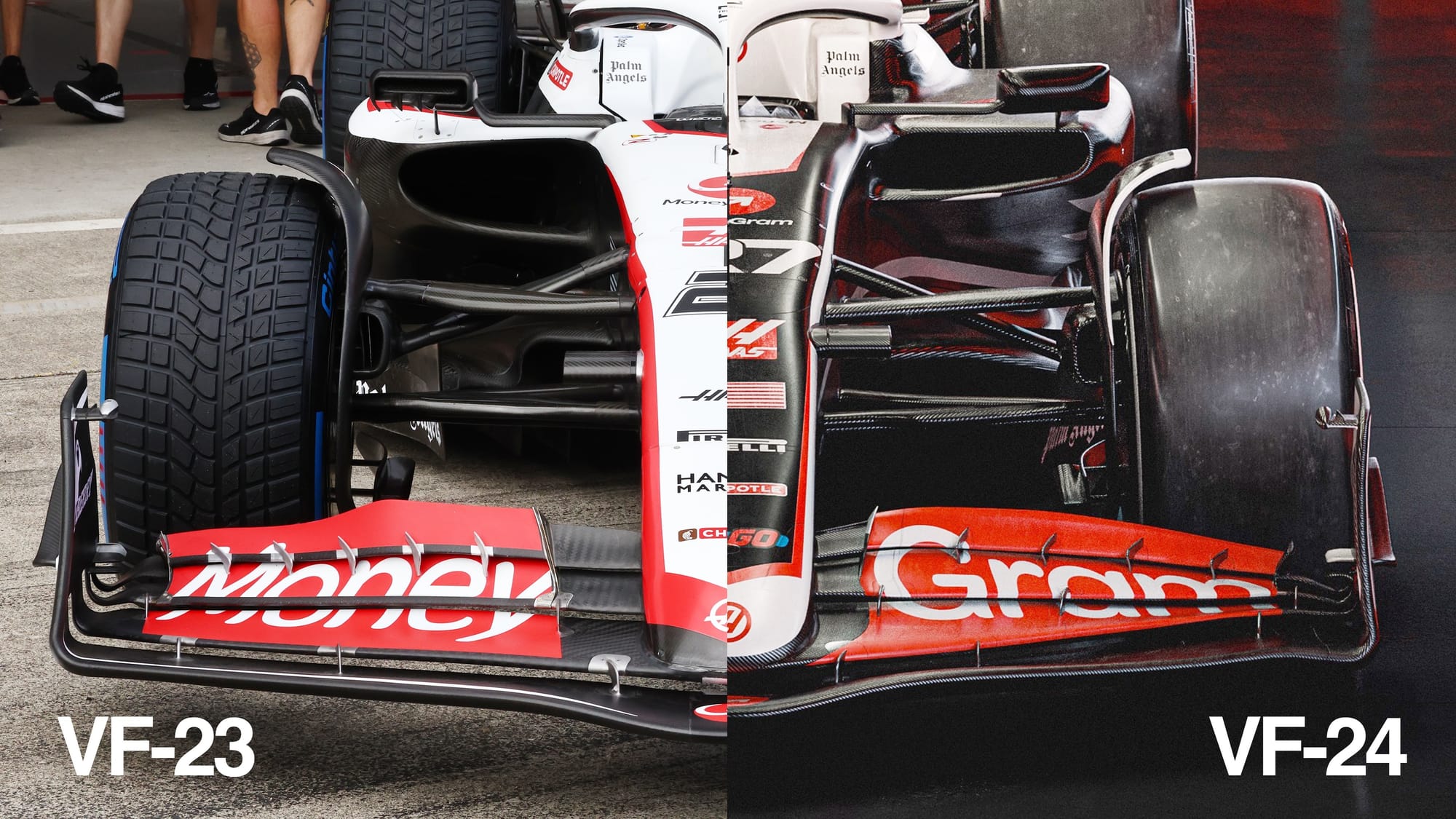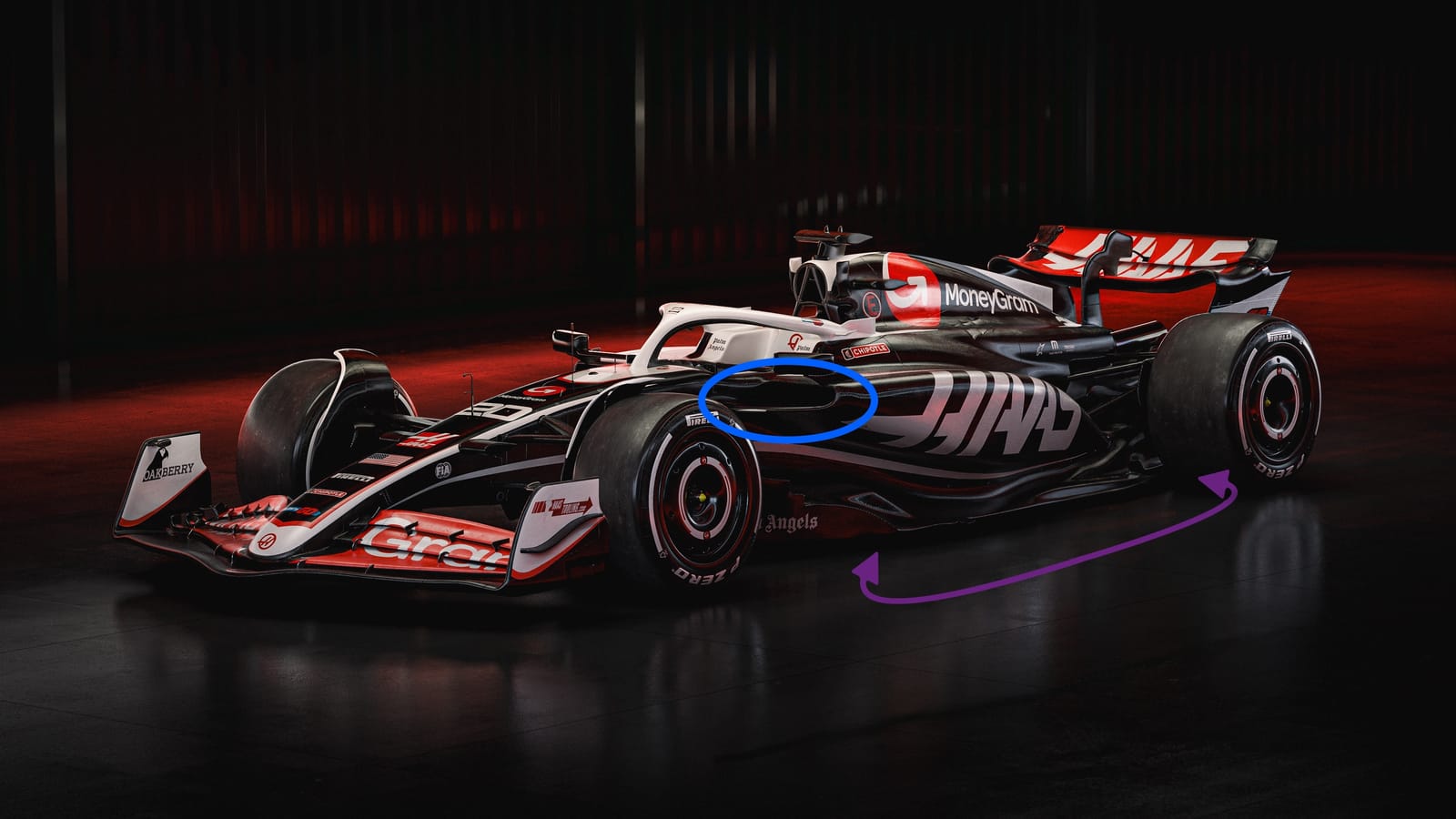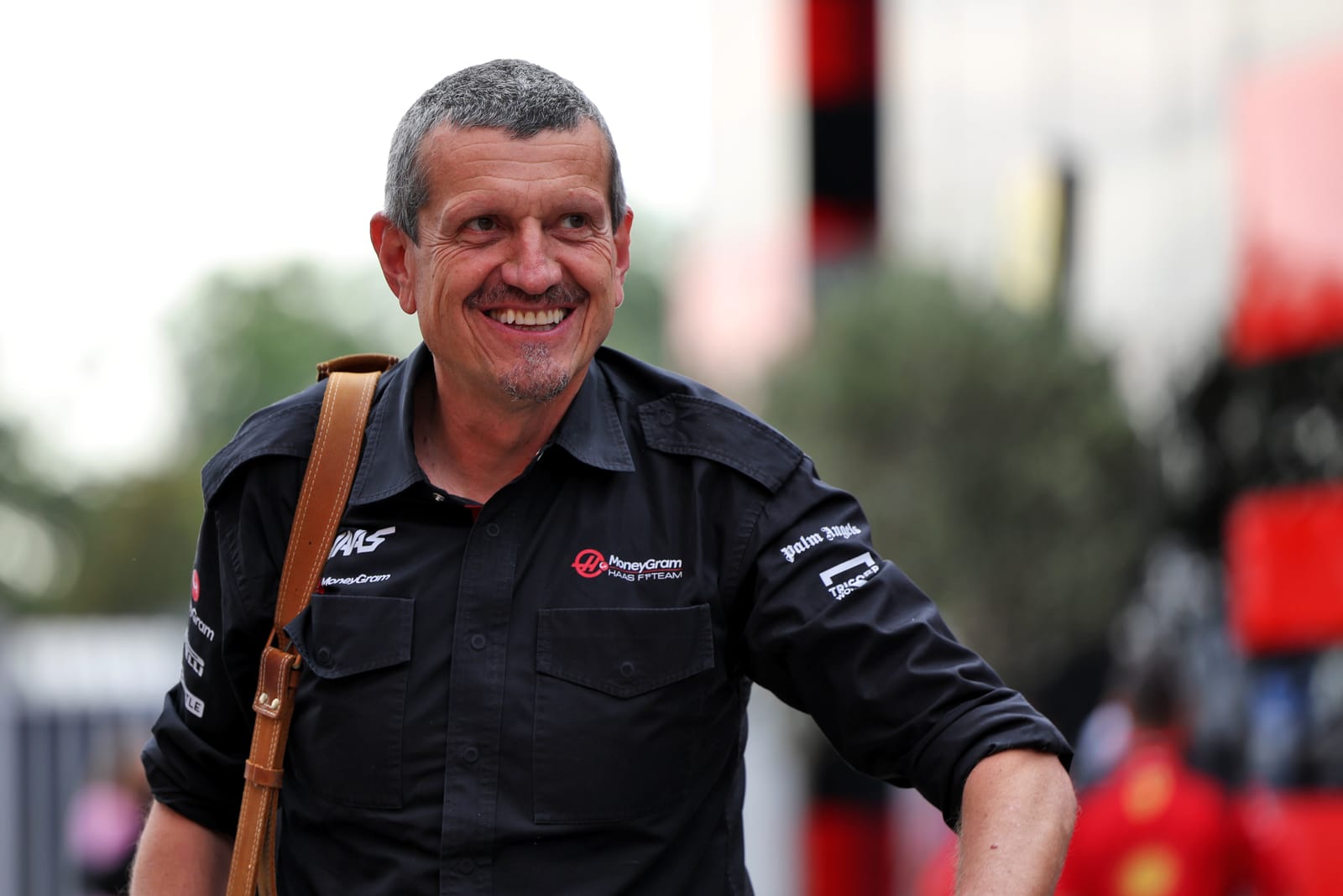Up Next

A brand new car – even one with a familiar look – is the first real kick-off for what Haas hopes will be a more successful era under new leadership, but Formula 1’s bottom team could find things get harder before they improve.
While Haas is optimistic the new VF-24 will give it a better base than its ultimately troubled predecessor, there are some warning signs for at least the start of the season. Its 2024 has begun with a clear line of ‘expectation management’ from new team boss Ayao Komatsu.
Honesty is great – Komatsu’s predecessor Guenther Steiner was famed for it – and there is no sense in Haas blowing smoke about its prospects if it truly expects to be in for a difficult start. But it is still worrying, given Haas finished last in the championship and had such clear car issues to overcome.
Just because Haas has switched to a similar car concept to that pioneered by Red Bull and followed by many other teams, it doesn't mean we should expect a sudden leap forward in performance. If anything, Komatsu is predicting the opposite.
In the wake of Steiner’s departure, the reshuffle had the air of team owner Gene Haas tasking Komatsu with making immediate progress leading the team off the back of the grid. And initially the tone was good: Komatsu claimed in his first media address last month that the 2024 car would be a “clear step” from last year’s troubled machine, for example.
But he was also already talking about being realistic for Haas’s prospects of challenging more in the midfield, and implied the 2024 car is not as well advanced as it should be.
Now the VF-24 has been revealed, Komatsu’s not just doubled down on all of that, he’s gone even more flat out.
Komatsu says plainly that the launch-spec Haas is “not going to be quick enough in Bahrain” and his hopes are so low that he reckons Haas will probably be the worst team at the start of the season: “Out of the gates in Bahrain we’re going to be towards the back of the grid, if not last.”
This is a direct result of stopping development on the VF-24 for two months to get its late-2023 Austin upgrade package together – you know, the one that did nothing to improve its fortunes.
While Komatsu is not quite arguing that Haas should not have bothered with that interim step and focused instead entirely on the 2024 car, because he believes that it did help confirm it was the right direction to go in, that decision has clearly left Haas further behind versus where it could have been had the VF-24 been its sole 2023 focus.

“It was a big exercise to do, and it did delay our VF-24 development, but if we hadn’t done it and then had a huge surprise come pre-season testing, it would’ve hurt us immensely,” he said.
“It was a difficult balance, and doing the Austin package means the VF-24 launch car may not be as advanced as it could be, but at the same time we have better confidence in what we’re putting out on track now.
“We’re all realistic that our launch car in Bahrain will not necessarily turn heads.”
That means the focus on two pre-test filming days, the official pre-season test, and the first race in Bahrain is going to be to get as much data as possible to work out which direction to develop the car and really understand its strengths and weaknesses.
In saying that, Komatsu has directed a thinly veiled dig at the previous regime, not just Steiner but presumably former technical director Simone Resta. He said that previously Haas failed to put together a “coherent plan to produce updates”.
That’s why there’s been a big focus on restructuring the technical organisation, with a new technical director in Andrea De Zordo and creating the new role of performance director with a tighter focus on overseeing in-season updates that will be held by Damien Brayshaw, previously Haas’s head of vehicle performance.
“If you look at the organisational structure previously, there isn’t a clear path to close the loop on that side,” said Komatsu.
“Everything that’s found trackside, there’s now a closed loop going into the aero, windtunnel and CFD departments.
“Now, at least even if there’s a disagreement, everyone is clear about why we’re developing the car in a certain way.
“That’s one key reason as to why we haven’t been able to put upgrades on the car and [used to] fall back in the season.
“We’re now already working in that way and there’s much better transparency, openness, and communication.
“Therefore, I believe we have a much better chance of upgrading the car properly this year.”

The hope is that this will pay off in-season rather than waiting for 2025. Komatsu reckons the first big upgrade of 2024 will benefit from the new structure, for example. And beyond that it is about making changes to help Haas in the long term.
Still, his short-term assessment is very frank, with regards to both the team’s existing shortcomings and how the past 12 months have put Haas on the back foot heading into 2024.
It sounds unwise to expect too much of Haas at the start of the year, and then it has an awful lot of work to address that through the season.
And while it would be wrong to write off its prospects, this does jar at least a little with an owner seemingly demanding instant progress.





